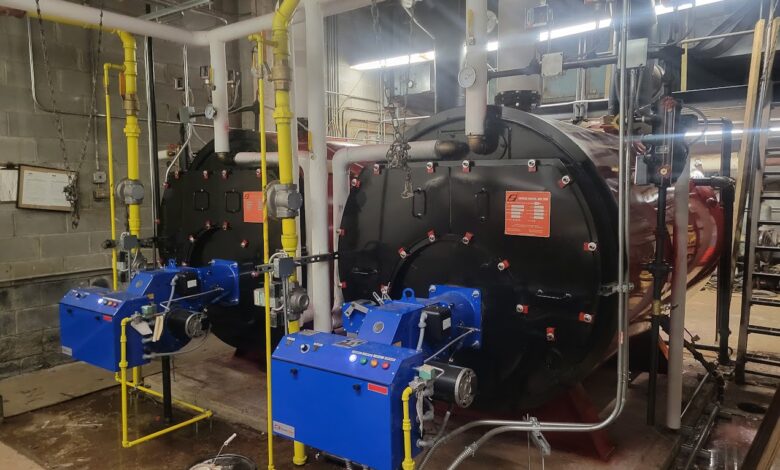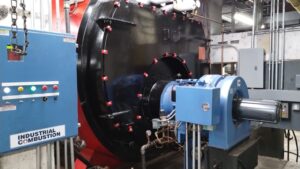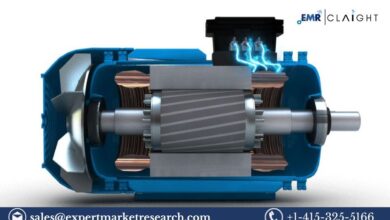The Importance of Regular Steam Boiler Inspections

Steam boilers are very important equipment in manufacturing, power generation, food processing, and heating industries. The boilers provide steam necessary for running machinery for the production of electricity or space heating. In other words, it is equipment without which the day-to-day functioning of the industries cannot be visualized. However, if not properly maintained, the steam boiler may become a very fatal piece of equipment. For this reason, regular inspection is required. ” Routine inspections of steam boilers ensure a reliable, safe, and efficient operation of the equipment.

Discuss the importance of routine inspections on steam boilers, legal and safety implications that may arise due to such inspections, the benefits of routine maintenance, and what to expect during an inspection.
Why Are Steam Boiler Inspections Important?
Since boilers are equipment that functions under high pressure and temperature thresholds, they degenerate over time due to wear, tear, and subsequent breakdown. In the case of boiler failure, the consequences may be exceedingly catastrophic, leading to explosions, expensive repair bills, and a prolonged downtime in operation. Scheduled inspection is an essential practice, identifying potential problems before reaching alarming levels, thereby ensuring that the boiler will continue to run efficiently and problem-free. Here are some reasons why regular inspections are important:
1. Safety considerations
The most significant purpose of conducting periodical inspections on steam boilers is to ensure safety from personnel and property damage. Steam boilers operate under very high pressures. Unchecked or unmaintained, a steam boiler can catch fire or even explode. The energy released by a ruptured boiler or vessel could be substantial enough to cause fires, grievous injuries, or even death.
Inspection is important, as anything like weakened pressure vessels, bad safety valves, or improper water levels could compromise the safe operation of the boiler. The checks on the structural integrity of the boiler and associated components are very significant in order to prevent accidents.
2. Compliance with Regulations and Standards
Most places have specific laws and safety requirements for boiler operation. In the United States, for instance, there are guidelines provided by the American Society of Mechanical Engineers (ASME) and the National Board Inspection Code (NBIC) on the design, operation, and inspection of boilers. The pieces of equipment need always to be checked if it comply with the standards and other local regulations.
Failure to observe these guidelines leads to heavy fines, penalties, or even closure. Regular inspections ensure that your boiler is complying with the requirements set; the risk of non-compliance and its impacts are minimized. Certification or an inspection report usually accompanies the audit by an inspector.
3. Prolong Boiler Life
Boilers have significant investment in the form of capital, and extending their lives is important in order to realize full benefits from the equipment. Regular inspections involve identifying potential issues of corrosion, scale buildup, or mechanical wear at an early juncture so that major breakdowns and expensive repair costs are averted. Small problems are addressed through servicing and repairs that guarantee that the boiler operates efficiently for its expected life or for a longer period.
Minor issues often result in major failures that may be expensive to rectify, for example, requiring the boiler to be fully replaced. This is quite an expensive option compared to maintenance performed in good time. Regular check-ups, calibrations, and cleaning extend the life cycle of the boiler with maximum payback.
4. Efficiency Optimisation
A steam boiler has a direct influence on the operational cost of a facility. An improperly serviced boiler will use more fuel, increase emissions and produce less steam, which essentially translates to high costs of energy, frequent shutdowns, and low productivity in general.
Regular inspections point out leakages, scale formation, soot accumulation, or malfunctioning controls that reduce boiler efficiency. By rectifying these conditions, inspection ensures that the boiler works at its optimal level of efficiency and cuts fuel consumption and operational costs.
Secondly, when efficiency problems are discovered in the early stages of inspection, facilities can take measures to save energy, reduce waste, and become more sustainable.
5. Preventing Costly Downtime
Boiler breakdown can cause severe downtimes, causing industrial operations to stall, with the site losing its productive hours. Companies that run on steam for constant production can afford no downtime at all. If the boiler is damaged, the duration to repair or replace it would result in delay, missed targets, and unsatisfied clients.
Routine inspections enable technicians to identify and correct minor faults before larger system failures arise. Preventive maintenance minimizes the potential occurrence of breakdowns by allowing the smooth operation of operations without costly interference.
6. Environmental Accountability
Efficient steam boilers save fuel costs and reduce emissions of harmful chemicals. A poorly maintained boiler can emit excessive levels of carbon monoxide, sulfur oxides, nitrogen oxides, and particulate matter, thus being detrimental to the environment.
Regular checks have ensured that your boiler runs most efficiently and within the set standards of emission levels. Combustion problems are identified, dead parts are replaced, and chemistry in water is checked according to set specifications as some ways of limiting the impact on the environment where your boiler runs.
In the modern world that is concerned about the environment, businesses are now held responsible for their carbon footprint. The facility can easily meet the standards of environmental standards in greenhouse gas emissions if routine boiler checks are done.
What Does Steam Boiler Inspection Entail?
General activities include checking the entire parts of a boiler for safety, efficiency, and overall conditions. Internal and external inspections or routine check-ups may be done. The following are the different elements that must be included in the steam boiler inspection:
1. Internal Inspection
Internal inspections are usually performed during a boiler shutdown. This is an opportune time for the inspector to look at some of the most critical internal parts, such as:
- Boiler Tubes: Corrosion, erosion, or scaling of the tubes must be considered extremely important. Scale accumulation can easily decrease efficiency because of its insulating property, which reduces the effect of heat transfer.
- Furnace: The inspector examines the refractory material and the furnace itself for cracking or deterioration.
- Pressure Vessel: Checking the pressure vessel for wear, cracks, or corrosion is also part of the assessment to determine the general integrity of the boiler.
- Water Levels: Proper water levels and checking water level indicators prevent boiler damage or explosion due to dry firing.
- Safety Valves: Safety valves are tested for good working condition. They maintain the boiler against running at hazardous pressures, and these must have some reliability.
2. External Inspection
Boiler external inspections check the outer parts of the boiler that can be seen during normal operation. Among them are the following:
- Burner and Controls: Evaluation of the burner’s ability to burn properly and its performance, such as control systems that monitor temperature, pressure, and airflow.
- Piping and Connections: The outer pipes are checked for leaks, corrosion, and erosion such that steam and feed water reach their destinations without any loss of energy.
- Stack Temperature: The high temperatures of the stack are indicative of heat loss, which originates from low efficiency. This is usually checked in a physical operating inspection.
- Blowdown Systems: The blow-down systems are checked so that it can function correctly. Wrong blowdown causes scaling and corrosion in the boiler.
3. Operating inspection
These will be done while the boiler is operating, often with actual testing of the various controls and monitoring systems to ensure correct working in a real-time situation.
- Water Treatment System: Boiler water treatment systems are an essential feature of keeping proper water chemistry. Water chemistry plays a critical role in the prevention of scale and corrosion in boilers.
- Fuel Supply: The examiner will also test the fuel supply system to ensure that the correct quantity and quality of fuel are being delivered.
4. Boiler Testing
Testing the main components like safety valves, pressure relief systems, and water level controls ensures that all important elements related to safety are working properly. These tests confirm that a boiler can work under safe conditions varying from one condition to another.
5. Documentation
The report that the inspector gives after inspecting is inclusive of all areas needing attention, recommended repair, and at large the condition of the boiler. These records are also useful to follow up on the boiler performance and maintenance history.
How Frequently Should Steam Boilers Inspect?
The general rule for the periodicity of inspections for steam boilers depends on boiler size, type, and service intensity, but is frequently determined by law for a given locale. For example, most boilers should be inspected annually to satisfy legal and insurance conditions.
However, high-load boilers or those in critical operation would probably require even higher frequency such as every six months to one year, to ensure continued performance and safe operation.
Many schedule routine inspections and also external inspections throughout the year. Most do a more intrusive internal inspection when the boiler is down for maintenance.
Boost Efficiency and Reliability with Supreme Boilers Advanced Steam Boiler Solutions
Supreme Boilers is dedicated to delivering high-performance steam boilers to companies demanding high efficiency and durability. The products are at the cutting edge level as it is ordered with different needs relating to the industry. Their FPS Series, FST Series, ESP Series, PLW Series, SM4 Series, and SM5 Series were designed and manufactured in order to deliver the highest degree of steam generation which would be energy efficient and have a long lifespan. With innovative features that upgrade performance and minimize downtime, the boilers ensure that your steam boiler system is at its peak, saving you on operational costs and ensuring adequate adhesion to standards in the industry.
Conclusion
Regular inspection of the steam boiler ensures proper safety, improved efficiency, reduced operation costs, and an extended life of the boiler. This is achieved through solving the early potential problems that will avert costly breakdowns, prevent non-conformity to regulation, and ensure safe working conditions. Besides guarantying a sustainable future, routine inspections make up an integral part of any sustainability strategy: improving fuel economy and minimizing harmful emissions.
By committing to regular inspections and maintaining a preventive maintenance schedule, companies can optimize the boiler’s operation, its reliability, and, in the long run, save on energy and repair costs.





